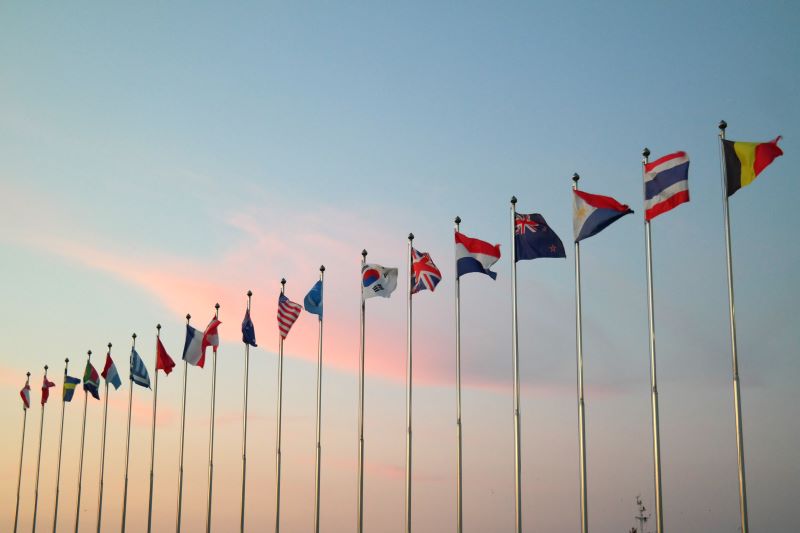Recommended


POLICY PAPERS
In a complex development landscape defined by transboundary challenges—impossible for any country to tackle by working alone—many have highlighted the need for deeper cooperation to make meaningful progress. Consider, for instance, early calls for countries to tackle COVID-19 “together”, as well as repeated recognition of the need for greater cooperation on climate to not only increase available finance, but to support innovation, technology transfers, and capacity-building to advance shared aims. At the same time, the effects of global challenges—including pandemics, conflicts, and climate change—are being felt locally, particularly by the poorest populations, and contributing to a reversal of progress made towards advancing the shared Sustainable Development Goals (SDGs). Despite such challenges, cooperation to advance development outcomes—especially at the multilateral level—is often limited by geopolitical tensions and concern for national interests, highlighting a critical paradox between the need for deeper cooperation to correct collective failures, and the declining willingness to act collectively.
Starting from the understanding that cooperative action remains critical to sourcing the resources, skills, and knowledge needed to advance the common Sustainable Development Goals (SDGs), this four-part series focuses on the challenges and opportunities for deepening cross-provider cooperation for development in the years ahead. Specifically, we focus on understanding the current scope of, and potential for deepening, cooperation between official bilateral development cooperation agencies from countries that are members of the Organisation for Economic Cooperation and Development (OECD) Development Assistance Committee (DAC) and non-DAC members. While we recognise that the scale of the response needed to achieve the SDGs extends well beyond public resources—and must necessarily include support from the private sector and civil society—we limit this study to development agencies, based on their leading role in coordinating and disbursing development activities on behalf of their countries.
A note on terminology: For the purpose of this series, we use the terms “DAC” and “non-DAC” to refer to different groups of actors; we recognize however, that neither group is homogenous. We use these terms due to their technical clarity, but appreciate the limitation of this approach, which defines all providers in reference to the OECD-DAC. Despite such limitations, this approach is less ambiguous than using alternative terms—notably “emerging” and “traditional”—which lack clarity on how each group is defined. A full explanation of our approach to terminology is available in this series’ first research paper.
Why focus on cooperation across DAC and non-DAC providers?
Since the early 2000s, the number of countries providing more visible and substantive levels of development cooperation has grown considerably, particularly from countries beyond the DAC. Indeed, one survey conducted by the UN Department of Economic and Social Affairs found that the share of “developing countries” providing development cooperation increased from 63 percent to 74 percent between 2015 and 2017, with others have shown that 88 countries are active in development cooperation—half of which were considered low or middle-income economies when the study was conducted. This proliferation of official providers highlights a growing international constituency for development, at a time when the global nature of development challenges requires new skills, knowledge, and resources, in response.
Despite the changing providers, there have been few systematic attempts to understand not only the spectrum of non-DAC provider countries and how they engage in development, but also how such providers currently cooperate with DAC members, and the potential barriers and opportunities for deeper engagement between DAC and non-DAC providers to support better collective development outcomes. To fill this gap, our new research series probes different aspects of the expanding provider landscape, ultimately asking how DAC and non-DAC providers could work together to leverage the diverse knowledge and expertise available to support the advancement of the SDGs. At a time when it is clear that “more of the same” is unlikely to bring about meaningful change, there is an opportunity for all types of providers to think differently, both about how they work—and how they work together—to deepen progress toward a common SDG vision.
Outline of the research series
To understand how DAC and non-DAC providers cooperate on development, and the challenges and opportunities for deepening such cooperation, this two-year research project uses four studies, which build on each other, and aim to provide evidence and guidance for development agencies seeking to build better cross-provider partnerships.
- Our first paper reviews and analyses trends in the changing development landscape in the context of COVID-19, to explore how non-DAC actors contributed to international responses and whether such responses accelerated the transition towards a more “global” development paradigm. To do so, we use desk-based research to map international responses to COVID-19—financial and beyond—to understand the changing nature of development cooperation as well as the growing role of non-DAC actors as part of this shift.
- Our second paper conducts a broad mapping of the non-DAC provider landscape to understand which countries currently have agencies responsible for managing outward development cooperation, what they do (in terms of cooperation instruments and modalities, sectors, and where they work), and how they currently partner with other providers—notably DAC members—on development. This is done in using a combination of: 1) qualitative desk-based research which compiles and analyses information from countries’ own reporting documents; 2) case study analysis which probes the historical development and rationale for engaging in cooperation across five countries—Indonesia, Mexico, South Africa, Türkiye, and the United Arab Emirates—and; 3) by developing a novel framework for measuring 54 non-DAC providers’ capacities and “openness” to various forms of cross-provider cooperation partnerships for development.
- Building from this analysis of the provider landscape, our third paper explores potential barriers to cooperation between DACs and non-DAC providers and asks how these barriers can be overcome. We use a combination of survey and interview-based research which aims to capture the perspectives of practitioners working in DAC and non-DAC development agencies and draw on their knowledge of practical challenges and potential solutions to working better together.
- Our final and fourth paper investigates whether and how well-positioned countries could act as potential “bridges” between DAC and non-DAC providers to influence, facilitate, or connect diverse actors on shared issues. Using a desk-based review of available literature on countries that have acted as bridges in development spaces or forums, we aim to develop a typology of possible bridging roles and functions, explore the conditions under which “bridging” typically occurs, and identify some potential risks and benefits for countries seeking to undertake bridging roles.
Taken together, we hope this series can provide new evidence on the current provider landscape beyond the OECD DAC, and give practical guidance on how deeper partnerships between diverse types of providers could be envisioned in the years ahead. While building partnerships and cooperation is never easy—particularly in a tense geopolitical context—it is clear that all countries have an interest in finding new ways to leverage the full range of global resources available to deepen progress towards the common 2030 Agenda. In this context, cooperation between a bigger and more diverse group of providers, has the potential to bring together existing resources in new ways to create outcomes that are improved by being more than the sum of their parts.
Disclaimer
CGD blog posts reflect the views of the authors, drawing on prior research and experience in their areas of expertise. CGD is a nonpartisan, independent organization and does not take institutional positions.








